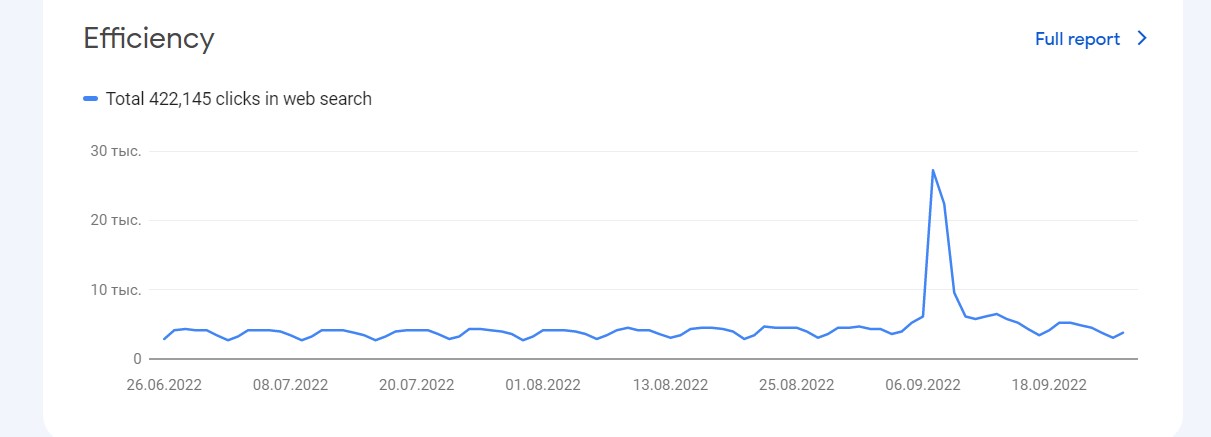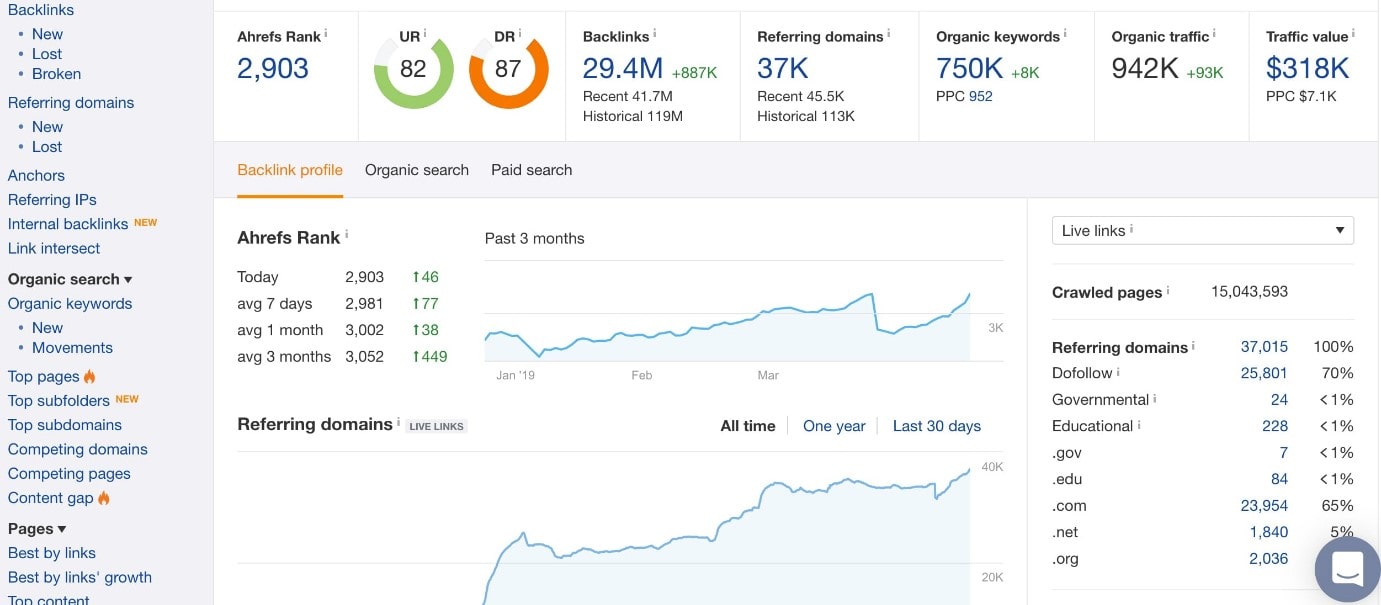Welcome to our comprehensive guide: “What is a Marketing Strategy?” ⚡. As the backbone of any successful business venture, a marketing strategy outlines a company’s approach to reaching and engaging its target audience. It’s the master plan that fuels brand visibility, customer loyalty, and revenue growth. The tasks involved in formulating a marketing strategy include:

- Market Research: Uncover what drives your audience.
- Competitor Analysis: Stay on top of industry trends.
- Unique Value Proposition (UVP) Creation: Stand out from the crowd.
- Marketing Mix Decision: Determine the right blend of product, price, place, and promotion.
- Budget Allocation: Invest resources wisely.
Tools like Plerdy can help streamline these tasks, providing valuable SEO and UX analysis insights. As we delve into the nuts and bolts of a marketing strategy, you’ll understand how to tailor your brand’s message and methods to hit the mark every time. Let’s get started!
Introduction to Marketing Strategy

From fledgling startups to long-established corporations, all businesses need a robust marketing strategy to thrive. This guidepost helps businesses navigate the vast market space, ensuring that every promotional effort propels the organization toward its desired objectives.
A marketing strategy is the master plan driving a company’s marketing endeavors. It profiles clients, including who they are, what they want, and how to serve them best. Businesses may stand out, meet customer needs, and expand sustainably with a strong marketing approach.
Core Elements of a Marketing Strategy
It is not enough to simply fill in the blanks when developing a marketing strategy; rather, this endeavor calls for an in-depth comprehension of the competitive landscape of business as well as careful preparation. Let’s break down the building blocks of a solid marketing strategy:
- Business Goals and Objectives: A strategy should sync with the overall vision and objectives of the business. It might be driving sales, boosting brand recognition, or nurturing customer relationships.
- Target Market Analysis: A deep-dive into your ideal customers—their preferences, behavior, needs, and pain points. This intel will help you develop products or services that resonate with them.
- Competitive Analysis: Understanding your competitors’ strengths and weaknesses can give you a strategic edge and help you carve out your unique market space.
- Unique Value Proposition (UVP): Your UVP is your promise to the customer—it’s what makes you stand out from the crowd. Your UVP should permeate every aspect of your marketing, from branding to advertising to customer service.
- Marketing Mix: The things you sell, their pricing, how and where you sell them, and how you advertise them are your strategy’s tactics.
Take the tech giant Apple as an example. Their marketing strategy hinges on their UVP of sleek design and intuitive functionality, appealing to a customer base that values aesthetics and ease-of-use. Their marketing mix includes premium-priced products, placement in high-end retail locations, and a broad advertising campaign across various media outlets.
Types of Marketing Strategies

Different businesses require different marketing strategies. Here are a few common types:
- Digital Marketing Strategy: This strategy leans into online platforms to reach and engage customers. Think email campaigns, search engine optimization (SEO), and pay-per-click (PPC) advertising, like Google Ads or Facebook. The rise of online shopping has made this strategy a must-have for most businesses.
- Content Marketing Strategy: This strategy involves creating and sharing valuable content to attract and retain customers. The goal is to establish yourself as a thought leader in your field. For instance, a fitness brand might offer free workout videos or healthy recipes on its blog.
- Social Media Marketing Strategy: This strategy uses social media platforms to connect with customers. Businesses can use these platforms to share engaging content, respond to customer queries, and even make sales. Instagram or TikTok, for instance, has become a favorite platform for fashion brands to showcase their products visually appealingly.
- Traditional Marketing Strategy: This strategy relies on traditional forms of media—like TV, radio, and print—to reach customers. Despite the digital revolution, traditional marketing remains effective for businesses targeting a less tech-savvy demographic.
Ultimately, a winning marketing strategy isn’t about choosing one type over another—it’s about creating a unique blend that suits your business and market.
How to Develop a Successful Marketing Strategy
Creating a successful marketing strategy might seem daunting. Still, with a step-by-step approach, you can cultivate a strategy that sets your business up for success.
- Understand Your Audience: Kick-off your strategy development by getting to know your customers. Dive into their preferences, behaviors, and pain points. Survey existing customers, monitor online conversations, and gather data from market research firms. This understanding will serve as the foundation for your marketing strategy.
- Define Your Marketing Goals: Outline what you aim to achieve through your marketing efforts. These goals should tie back to your broader business objectives—be it driving sales, boosting brand awareness, or nurturing customer relationships. The SMART (Specific, Measurable, Achievable, Relevant, Time-bound) goal framework can help you formulate effective goals.
- Develop a Marketing Budget: Every strategy needs fuel to run—and in marketing, that fuel is your budget. Align your budget with your marketing goals, considering the costs of different marketing tactics. Remember, effective marketing isn’t about spending more—it’s about spending smart.
- Implementation of the Marketing Strategy: Now, it’s time to implement your plan. Launch your marketing initiatives, ensuring they align with your UVP and cater to your target audience. Track their performance and adjust as needed—agility is the key to a successful marketing strategy.
- Measurement and Evaluation: Monitor your marketing efforts and measure their performance against your goals. Use key performance indicators (KPIs) like sales volume, customer acquisition cost, and customer engagement rate to assess the impact of your strategy. Be ready to pivot and adapt as you learn more about what works and what doesn’t.
Marketing Strategy Examples

Let’s consider a few real-world examples of successful marketing strategies to bring the theory to life.
Nike’s ‘Just Do It’ Campaign: Nike’s marketing strategy focuses on inspiring its customers. The famous ‘Just Do It’ campaign uses powerful storytelling to motivate people to overcome their limitations and achieve their fitness goals. Nike targets an audience that values performance and inspiration, and their marketing reflects that.
Starbucks’ Customer-Centric Approach: Starbucks bases its marketing strategy on delivering an exceptional customer experience. They focus on creating a cozy and inviting ‘third-place’ atmosphere (not work, not home) in their stores. They also engage their customers through their loyalty program, personalizing offers based on customers’ buying habits. This strategy has earned them a loyal customer base and a strong presence in the coffee shop market.
Common Mistakes in Marketing Strategy and How to Avoid Them
Even with the best intentions, businesses sometimes falter when implementing their marketing strategy. Here are some common pitfalls and tips on how to sidestep them:
- Lack of Clear Objectives: A marketing strategy can quickly lose direction without well-defined goals. Avoid this by setting SMART goals that align with your business objectives.
- Insufficient Market Research: If you don’t understand your customers, you can’t serve them effectively. Bypass this mistake by investing time and resources in comprehensive market research.
- Ignoring Competitor Activity: Stay informed about your competitors’ activities, but focus on carving out your unique market space rather than copying their tactics.
- Inadequate Budget Planning: Without proper budgeting, your marketing strategy can drain resources without delivering returns. Plan your budget carefully, ensuring it aligns with your marketing goals and delivers a positive return on investment.
- Failing to Measure Results and Adapt: Stubbornly sticking to a failing strategy can be costly. Regularly measure your strategy’s performance and be ready to adjust your tactics based on your findings.
In conclusion, developing a successful marketing strategy is an iterative process. It requires a deep understanding of your audience, clear goals, strategic budgeting, effective implementation, and ongoing evaluation. With these steps, you can create a robust marketing strategy that propels your business to success.
Marketing Strategies vs. Marketing Plans

In the bustling hub of business operations, marketing strategies and marketing plans often get mixed up. However, these two components, while closely intertwined, serve distinct purposes in the realm of marketing.
- A marketing strategy is the compass — it provides a clear direction based on thorough market analysis and business objectives. It outlines your target audience, what they crave, and how you can better meet their needs than your competitors. The strategy serves as the guiding principle that steers all your marketing efforts.
- On the other hand, a marketing plan is the road map — it lays out the practical steps to actualize your strategy. This includes specific marketing campaigns, timelines, budgets, and performance metrics. The plan provides detailed actions to translate your strategy into tangible results.
Think of it like going on a trip. Your strategy is the decision to travel from Los Angeles to New York, considering your preferences, budget, and time constraints. Your marketing plan is the detailed itinerary—when to start, which route to take, where to stop, how much to spend, and so on.
How to Create a Marketing Strategy
Creating an effective marketing strategy involves analysis, creativity, and meticulous planning. Here are the key steps:
- Identify Your Business Goals: Align your marketing strategy with your overall business objectives. Whether you aim to break into a fresh market or boost customer retention, clarity about your goals sets the stage for a successful strategy.
- Understand Your Target Market: Research your ideal customers—their preferences, behaviors, needs, and challenges. You can gather this information through customer surveys, social media monitoring, and industry research.
- Analyze Your Competitors: Learn what your competitors are doing well, where they fall short, and how you may set yourself apart.
- Tools like SWOT analysis can be instrumental here.
- Define Your Unique Value Proposition (UVP): Identify what makes your business unique and why customers should choose you over the competition. Your UVP should be compelling and cater to your customers’ needs.
- Outline Your Marketing Mix: Decide on the specifics of your marketing tactics—the products or services you’ll offer, the price point, the distribution channels, and the promotional methods.
- Set Your Marketing Budget: Allocate resources to different marketing activities, ensuring you have enough to effectively implement your strategy.
- Establish Performance Metrics: Decide how you’ll measure the success of your strategy. Choose key performance indicators (KPIs) that align with business goals—like sales growth, market share, or customer satisfaction.
The Future of Marketing Strategies
Marketing strategies are not set in stone—they evolve with changing market dynamics, technological advancements, and societal shifts.
Data and technology will play an increasingly crucial role in future marketing strategies. With the wealth of customer data available today, businesses can craft highly personalized marketing messages. Artificial Intelligence and Machine Learning are likely to become even more prevalent, offering insights into customer behavior and automating routine marketing tasks.
Sustainability and social responsibility are also emerging as significant factors in marketing strategies. As customers become more conscious about their purchases’ social and environmental impact, businesses will need to demonstrate their commitment to these values in their marketing.
Finally, businesses must stay abreast of the latest trends and platforms as the digital landscape evolves. A few of the breakthroughs influencing the marketing strategy’s direction are virtual reality, augmented reality, and voice search.
Creating a marketing strategy is a dynamic, iterative process that calls for a deep understanding of your market and a commitment to continuous learning and adaptation. With a robust marketing strategy, businesses can navigate the evolving market landscape and drive sustainable growth.
Benefits of a Marketing Strategy

Constructing a solid marketing strategy reaps a multitude of advantages for businesses, both large and small. Devising a detailed blueprint enhances a company’s ability to communicate effectively with its customers, a critical factor in driving profitability.
Aligning Business Objectives
A well-thought-out marketing strategy aligns perfectly with overall business objectives. For example, if a sports apparel brand aims to increase its market share in the youth segment, a strategy might involve collaboration with influencers popular among teenagers.
Customer Understanding
Effective strategies enable companies to gain a more in-depth understanding of their customers. Businesses can comprehend their target audience’s preferences, purchasing behavior, and pain points more accurately. Take a SaaS company as an instance – it might use analytics to observe customer usage patterns, enabling it to tailor its offerings more effectively.
Competitive Advantage
Crafting a robust marketing strategy gives companies an edge over their competition. For instance, an organic food company might implement a strategy highlighting its commitment to sustainability, thereby distinguishing itself from conventional competitors.
Importance of Marketing Strategy

In the dynamically changing business landscape, the importance of having a well-defined marketing strategy cannot be overstated.
A Guiding Beacon
An articulate strategy serves as a guiding light, allowing companies to stay on course towards their goals. For example, an e-commerce site may have a detailed plan to increase its conversion rate, guiding its actions and decisions.
Resource Optimization
Resource optimization is another essential aspect. With a strategy in place, businesses can efficiently use their resources, avoiding unnecessary expenditures. An automobile company might have a strategy to advertise its products on platforms frequented by vehicle enthusiasts, optimizing its advertising budget.
Long-term Success
A marketing strategy also lays the groundwork for long-term success. By studying market trends and customer behavior, companies can predict future opportunities and challenges. An education technology firm, for instance, might foresee the growing trend of online learning and devise a strategy to cater to that demand.
Marketing Strategy Vs. Marketing Tactic

Often, the terms marketing strategy and marketing tactic are used interchangeably. However, they differ in many ways, and understanding these differences is critical.
A marketing strategy is a comprehensive plan that outlines a company’s overall approach to achieving its marketing objectives. On the other hand, marketing tactics are the specific actions or steps taken to execute the strategy.
Consider a brand of footwear as an illustration. Its marketing strategy might be to position itself as a leading choice for athletes. A corresponding tactic could be sponsoring a popular sports event to increase visibility among its target audience.
To put it another way, if a marketing strategy is the journey towards a destination, marketing tactics are the steps taken to reach there. An e-book publisher might have a strategy to increase its subscriber base, with tactics including offering a free e-book or organizing webinars with famous authors.
Finally, both strategies and tactics are essential for successful marketing. A well-crafted strategy, executed through effective tactics, can take businesses to unimaginable success, helping them leave a strong imprint in their respective markets.
- Examples of Marketing Strategies: Positioning as a market leader, targeting a specific demographic, developing unique product features
- Examples of Marketing Tactics: Social media campaigns, influencer collaborations, SEO optimization
With the right balance of both, any business can steer its marketing efforts in the right direction, making a mark in the minds of consumers and ultimately driving business growth.
FAQs
What exactly is a marketing strategy?
A marketing strategy is a detailed plan that businesses create in order to communicate with customers effectively and meet their marketing objectives. It describes a company’s market position, target audience, and strategy.
How does a marketing strategy differ from a marketing plan?
While closely related, these terms have unique definitions. A marketing strategy outlines the overarching approach and goals, while a marketing plan details the specific actions – the how, when, and where – required to implement the strategy.
What elements should be included in a marketing strategy?
A well-rounded marketing strategy should encompass a clear understanding of your target audience, your unique selling proposition, positioning, marketing mix (product, price, place, and promotion), and strategies for customer retention and engagement.
Why is a marketing strategy essential for a business?
A robust marketing strategy is crucial because it aligns with the overall business objectives, helps understand the customers better, and provides a competitive edge. It also optimizes resource allocation, paving the way for long-term success.
Can you provide an example of a marketing strategy?
Absolutely. Consider a fitness apparel brand aiming to grow its market share among millennials. Its marketing strategy could involve positioning its products as eco-friendly and promoting them on social platforms this demographic prefers. Tactics could include influencer collaborations, social media campaigns, and content marketing focusing on sustainability and fitness trends.
Conclusions
In wrapping up, let’s affirm the essential role of a marketing strategy in navigating the competitive business landscape. A marketing strategy serves as a compass, guiding businesses in the right direction, showing them how to optimize their resources, and unlocking the pathway to robust growth. This science-infused management approach equips brands with the critical skills to identify and engage their target market, carve out a unique niche, and craft compelling narratives that resonate with potential customers.
This strategy isn’t merely a static document but an evolving blueprint that adapts to changing market dynamics, consumer behaviors, and business goals. Embracing this career in marketing sciences requires an analytical mindset, the willingness to test various techniques, and the ability to retrieve meaningful insights from a sea of data.
Implementing a marketing strategy involves leveraging tools like Plerdy that offer superior UX & SEO analysis, shaping your website’s user experience and improving its visibility on search engines. Give Plerdy tools a try, and witness the transformative influence they can have on your marketing strategy. Leverage the strength of decision-making informed by data to put your company on the road to prosperity.
